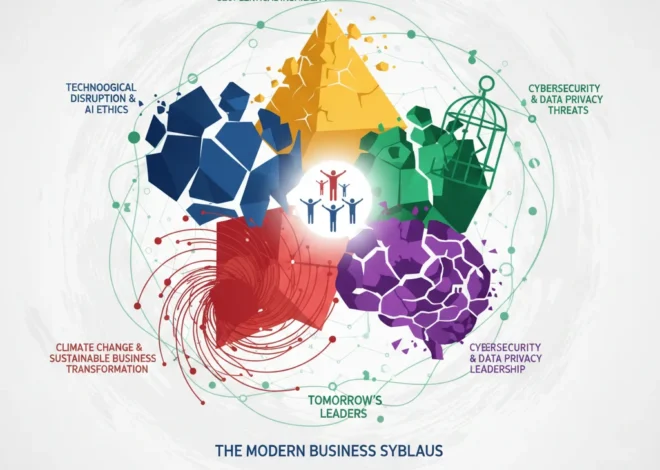
The Investor’s Crossword: Decoding the Puzzles of the Modern Economy
Every morning, enthusiasts worldwide sharpen their pencils—or, more likely, tap their screens—to tackle the day’s crossword puzzle. It’s a ritual of logic, vocabulary, and pattern recognition. Each clue, whether straightforward or cryptic, is a piece of a larger, interconnected whole. The satisfaction comes not just from filling a single blank, but from seeing how “14 Across” intersects with “3 Down” to reveal a more complete picture. This daily challenge, much like the one found in the Financial Times Crossword Number 18,215, serves as a powerful metaphor for the task facing every investor, business leader, and finance professional today: solving the complex puzzle of the global economy.
The modern financial landscape is the ultimate cryptic crossword. Its clues are scattered across headlines, market data, and technological breakthroughs. Understanding the interplay between inflation, interest rates, fintech disruption, and geopolitical shifts is akin to deciphering the setter’s logic. To succeed, one needs more than just information; one needs a framework for connecting disparate ideas and anticipating how they will intersect. This article will explore how we can apply the disciplined mindset of a puzzle-solver to navigate the intricate grid of modern finance, from macroeconomic trends to disruptive technologies.
The “Across” Clues: Mapping Macroeconomic Intersections
In any crossword, the “across” clues form the horizontal backbone of the puzzle. They are often the longest and most foundational entries, defining the structure for all the smaller words that intersect with them. In the world of finance and investing, these are the macroeconomic forces that set the stage for everything else.
Think of interest rate policy from the Federal Reserve or the European Central Bank as “1 Across.” This single “entry” influences the entire grid, affecting everything from corporate borrowing costs and mortgage rates to currency valuations and the attractiveness of the stock market. When central banks adjust rates, they are effectively changing a fundamental piece of the puzzle, forcing investors to re-evaluate all the intersecting “down” clues—the individual company valuations and sector outlooks.
Similarly, inflation is another critical “across” clue. It’s not a static answer but a dynamic force that erodes purchasing power and reshapes consumer behavior. According to the International Monetary Fund’s latest outlook, global inflation is projected to fall, but the path remains uncertain. This uncertainty is a cryptic clue in itself. Does it signal a soft landing for the economy, or does it hide the risk of a recession? An astute investor, like a master puzzle-solver, doesn’t just see the word “inflation”; they consider its relationship with employment figures, supply chain stability, and geopolitical tensions to understand its true meaning for their portfolio.
These broad economic themes are interconnected. A geopolitical flare-up (a tough “across” clue) can disrupt energy supplies, which in turn impacts inflation, forcing a response from central banks on interest rates. The ability to see these chain reactions is what separates a novice from an expert in the field of economics. You cannot solve one clue in isolation; you must constantly cross-reference it with the others to ensure the entire board makes sense.
The Ultimate Illiquid Asset: Deconstructing the ROI of a £100,000 'Gentleman Tutor' for a Baby
The “Down” Clues: Deep Dives into Sectors and Stocks
If macro trends are the “across” clues, then individual stocks, corporate earnings, and sector-specific dynamics are the “down” clues. These require a more focused, vertical analysis. Solving these clues involves digging into the fundamentals: balance sheets, income statements, competitive advantages, and management quality. This is the realm of bottom-up investing and active trading.
Consider the banking sector. A “down” clue might be “A financial institution adapting to digital transformation.” The answer could be a legacy giant like JPMorgan Chase or a nimble fintech player like Block (formerly Square). To choose the right answer, you need to compare them. This requires careful analysis of their specific attributes, much like weighing the different possible letters that could fit into a single square.
Let’s visualize this with a comparative table:
| Metric | Legacy Bank (e.g., JPMorgan Chase) | Fintech Challenger (e.g., Block, Inc.) |
|---|---|---|
| Business Model | Diversified: consumer banking, investment banking, asset management. | Focused: payment processing, peer-to-peer payments, crypto services. |
| Growth Driver | Economic cycles, interest rate spreads, scale efficiency. | User acquisition, technological innovation, ecosystem expansion. |
| Valuation (P/E Ratio) | Typically lower and more stable, reflecting mature growth. | Often higher, reflecting market expectations for future growth. |
| Regulatory Scrutiny | High and well-established. | Evolving and often less stringent, but increasing. |
As the table shows, neither answer is inherently “correct.” The right fit depends on the intersecting “across” clues. In a high-interest-rate environment, the stable earnings of a legacy bank might be more attractive. In a period of rapid technological adoption, the growth potential of a fintech innovator might be the better play. The key is understanding that every “down” clue is influenced by the “across” clues it intersects with.
The Anagrams & Cryptic Clues: Decoding Fintech and Blockchain
The most challenging—and often rewarding—parts of a crossword are the cryptic clues and anagrams. They require you to think laterally and recognize that the words in front of you may have a hidden meaning. In finance, the equivalent is disruptive technology, particularly financial technology (fintech) and blockchain.
At first glance, concepts like Decentralized Finance (DeFi), smart contracts, or AI-driven trading algorithms can seem like nonsensical anagrams. They scramble the letters of traditional finance, rearranging concepts like lending, ownership, and exchange into new and unfamiliar forms. For years, many established players in the banking industry dismissed them as a fad. But just as a skilled solver learns to spot an anagram indicator, savvy investors are learning to recognize the disruptive potential embedded within these technologies.
Blockchain, for example, is a fundamental re-imagining of how trust and transactions are recorded. It’s a “cryptic clue” that hints at a future with more transparent supply chains, tokenized real-world assets, and more efficient cross-border payments. The global blockchain market is a testament to this, with significant growth projected as industries move from exploration to application. A report from Grand View Research highlights this expanding adoption, underscoring its shift from a niche concept to a foundational technology.
Similarly, the rise of AI in fintech is revolutionizing everything from credit scoring and fraud detection to personalized wealth management. These technologies are not just incremental improvements; they are changing the very structure of the financial services industry. To ignore them is to leave a significant portion of the puzzle blank, risking an incomplete and flawed view of the market’s future.
The £3 Million Glitch: How a Government Algorithm Mistook Family Holidays for Permanent Exits
Filling in the Final Squares: Strategy and Continuous Learning
As you near the end of a crossword, the last few empty squares are often the hardest. You fill them in by using the letters from all the intersecting words you’ve already solved. This final phase is all about synthesis—bringing together everything you know to complete the picture.
In investing, this is the stage of portfolio construction and risk management. It involves looking at the entire board—the macroeconomic outlook, your sector analyses, your understanding of disruptive technologies—and making sure it all forms a coherent strategy. Are your “down” picks (individual stocks) compatible with your “across” assumptions (economic forecast)? Have you accounted for the “cryptic clues” of technological change?
This process is never truly finished. The financial crossword is published anew each day. The commitment to continuous learning is the pencil that never dulls. Engaging with market analysis, staying abreast of technological trends, and constantly questioning your own assumptions are essential practices. The moment you stop learning is the moment you put yourself at a disadvantage.
Ultimately, navigating the world of finance, investing, and the broader economy is a test of intellectual agility. It demands the same skills required to solve a complex puzzle: attention to detail, an understanding of interconnected systems, and the creativity to see patterns where others see only chaos. By adopting the mindset of a puzzle-solver, we can approach the markets not with fear or greed, but with curiosity, strategy, and the quiet confidence that comes from knowing how to connect the clues.
The New Scramble for Africa: Why the US Just Dethroned China in a High-Stakes Investment Race
The financial world will always present us with new puzzles, each more intricate than the last. But for those who relish the challenge, the process of solving them is its own reward, offering not just the potential for financial gain, but a deeper understanding of the complex, fascinating, and ever-evolving world we live in.


